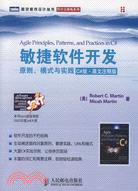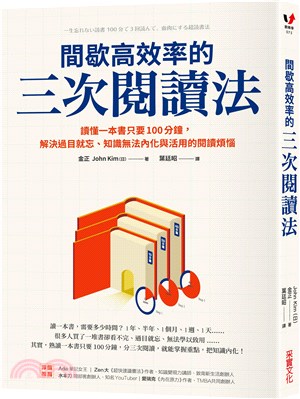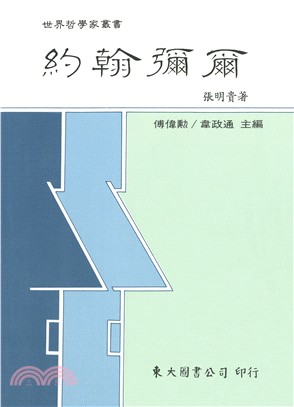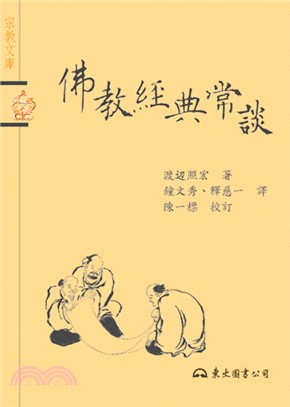商品簡介
本書適于軟件開發和管理人員提高自身水平學習之用,也適于用作高校計算機專業本科生、研究生以及軟件學院的軟件工程和軟件開發相關課程的教材或參考書。
作者簡介
目次
Chapter 1:Agile Practices 敏捷實踐
The Agile Alliance 敏捷聯盟
Individuals and Interactions over Processes and Tools人和交互重于過程和工具
Working Software over Comprehensive Documentation 可以工作的軟件重于面面俱到的文檔
Customer Collaboration over Contract Negotiation 客戶合作重于合同談判
Responding to Change over Following a Plan 隨時應對變化重于遵循計劃
Principles 原則
Conclusion 結論
Bibliography 參考文獻
Chapter 2:Overview of Extreme Programming 極限編程概述
The Practices of Extreme Programming 極限編程實踐
Whole Team 完整團隊
User Stories 用戶故事
Short Cycles 短交付周期
Acceptance Tests 驗收測試
Pair Programming 結對編程
Test.Driven Development(TDD) 測試驅動開發
Collective Ownership 集體所有權
Continuous Integration 持續集成
Sustainable Pace 可持續的開發速度
Open Workspace 開放的工作空間
The Planning Game 計劃游戲
Simple Design 簡單設計
Refactoring 重構
Metaphor 隱喻
Conclusion 結論
Bibliography 參考文獻
Chapter 3:Planning 計劃
Initial Exploration 初始探索
Spiking,Splitting,and Velocity 探究、分解和速度
Release Planning 發布計劃
Iteration Planning 迭代計劃
Defining“Done” 定義“完成”
Tlask Planning 任務計劃
Iterating 迭代
Tracking 跟蹤
Conclusion 結論
Bibliography 參考文獻
Chapter 4:Testing 測試
TIest-Driven Development 測試驅動開發
Example of Test-First Design 測試優先設計的例子
Test Isolation 測試促使模塊之間隔離
Serendipitous Decoupling 意外獲得的解耦合
Acceptance Tests 驗收測試
Serendipitous Architecture 意外獲得的構架
Conclusion 結論
Bibliography 參考文獻
Chapter 5:Refactoring 重構
A Simple Example of Refactoring:Generating Primes 素數產生程序:一個簡單的重構示例
Unit Testing 單元測試
Refactoring 重構
The Final Reread 最后審視
Conclusion 結論
Bibliography 參考文獻
Chapter 6:A Programming Episode 一次編程實踐
The Bowling Game 保齡球比賽
Conclusion 結論
Overview of the Rules of Bowling 保齡球規則概述
Section II Agile Design 敏捷設計
Chapter 7:What Is Agile Design 什么是敏捷設計
Design Smells 設計臭味
Design Smells——The Odors of Rotting Software 設計壞味——腐化軟件的氣味
Rigidity 僵化性
Fragility 脆弱性
Immobility 頑固性
Viscosity 粘滯性
Needless Complexity 不必要的復雜性
NeedLless Repetition 不必要的重復
Opacity 晦澀性
Why Software Rots 軟件為何會腐化
The Copy Program Copy 程序
A Familiar Scenario 熟悉的場景
Agile Design of the Copy Program copy 程序的敏捷設計
Conclusion 結論
Bibliography 參考文獻
Chapter 8:The Single-Responsibility Principle(SRP) SRP:單一職責原則
Defining a Responsibility 定義職責
Separating Coupled Responsibilities 分離耦合的職責
Persistence 持久化
Conclusion 結論
Bibliography 參考文獻
Chapter 9:The Open/Closed Principle(OCP) OCP:開放-封閉原則
Description 0f OCP OCP概述
The Shape Application Shape 應用程序
Violating OCP 違反OCP
Conforming to OCP 遵循OCP
Anticipation and“Natural”Structure 預測變化和“貼切的”結構
Putting the“Hooks”In 放置吊鉤
Using Abstraction to Gain Explicit Closure使用抽象獲得顯式封閉
Using a Data-Driven Approach to Achieve Closure 使用“數據驅動""的方法獲取封閉性
Conclusion結論
Bibliography參考文獻
Chapter 10:The Liskov Substitution Principle(LSP) LSP:Liskov替換原則
Violations 0f LSP 違反LS P的情形
A Simple Example 簡單例子
A More Subtle Violation 更微妙的違反情形
A Real-World Example 實際的例子
Factoring Instead of Deriving 用提取公共部分的方法代替繼承
Heuristics and Conventions 啟發式規則和習慣用法
Conclusion 結論
Bibliography 參考文獻
Chapter 11:The Dependency-Inversion Principle(DIP) DIP:依賴倒置原則
Layering 層次化
Ownership Inversion 倒置的接口所有權
Dependence on Abstractions 依賴于抽象
A Simple DIP Example 簡單的DIP示例
Finding the Underlying Abstraction 找出潛在的抽象
The Furnace Example 熔爐示例
Conclusion 結論
Bibliography 參考文獻
Chapter 12:The Interface Segregation Principle(ISP) ISP:接口隔離原則
Interface Pollution 接口污染
Separate Clients Mean Separate Interfaces 分離客戶就是分離接口
Class Interfaces versus Object Interfaces 類接口與對象接口
Separation Through Delegation 使用委托分離接口
Separation Through Multiple Inheritance 使用多重繼承分離接口
The ATM User Interface Example ATM用戶界面的例子
Conclusion 結論
Bibliography 參考文獻
Chapter 13:Overview of UML for C# Programmers C#程序員UML概觀
Class Diagrams 類圖
Object Diagrams 對象圖
Sequence Diagrams 順序圖
Collaboration Diagrams 協作圖
State Diagrams 狀態圖
Conclusion 結論
Bibliography 參考文獻
Chapter 14:Working with Diagrams 使用UML
Why Model? 為什么建模
Why Build Models of Software? 為什么構建軟件模型
Should We Build Comprehensive Designs Before Coding? 編碼前應該構建面面俱到的設計嗎
Making Effective Use of UML 有效使用UML
Communicating with Others 與他人交流
Road Maps 脈絡圖
Back-End Documentation 項目結束文檔
What to Keep and What to Throw Away 要保留的和要丟棄的
Iterative Refinement 迭代式改進
Behavior First 行為優先
Check the Structure 檢查結構
Envisioning the Code 想象代碼
Evolution of Diagrams 圖的演化
When and How to Draw Diagrams 何時以及如何繪制圖示
When to Draw Diagrams and When to Stop 何時要畫圖,何時不要畫圖
CASE Tools CASE工具
But What About Documentation? 那么,文檔呢
Conclusion 結論
Chapter 15 State Diagrams 狀態圖
The Basics 基礎知識
Special Events 特定事件
Superstates 超狀態
Initial and Final Pseudostates 初始偽狀態和結束偽狀態
Using FSM Diagrams 使用FSM圖示
Conclusion 結論
Chapter 16:Object Diagrams 對象圖
A Snapshot in Time 即時快照
Active Objects 主動對象
Conclusion 結論
Chapter 17:Use Cases 示例
Writing Use Cases 編寫用例
Alternate Courses 備選流程
What Else? 其他東西呢
Diagramming Use Cases 用例圖
Conclusion 結論
Bibliography 參考文獻
Chapter 18:Sequence Diagrams 順序圖
The Basics 基礎知識
Obj ects,Lifelines,Messages,and Other Odds and Ends 對象、生命線、消息及其他
Creation and Destruction 創建和析構
Simple Loops 簡單循環
Cases and Scenarios 時機和場合
Advanced Concepts 高級概念
Loops and Conditions 循環和條件
Messages That Take Time 耗費時間的消息
Asynchronous Messages 異步消息
Multiple Threads 多線程
Active Objects 主動對象
Sending Messages to Interfaces 向接口發送消息
Conclusion 結論
Chapter 19:Class Diagrams 類圖
The Basics 基礎知識
Classes 類
Association 關聯
Inheritance 繼承
An Example Class Diagram 類圖示例
The Details 細節
Class Stereotypes 類衍型
Abstract Classes 抽象類
Properties 屬性
Aggregation 聚集
Composition 組合
Multiplicity 多重性
Association Stereotypes 關聯衍型
Nested Classes 內嵌類
Association Classes 關聯類
Association Qualifiers 關聯修飾符
Conclusion 結論
Bibliography 參考文獻
Chapter 20 Heuristics and C0ffee 咖啡的啟示
The Mark IV Special Coffee Maker Mark IV型專用咖啡機
Specification 規格說明書 260
A Common but Hideous Solution 常見的丑陋方案
Imaginary Abstraction 虛構的抽象
An Improved Solution 改進方案
Implementing the Abstract Model 實現抽象模型
The Benefits of This Design 這個設計的好處
Ooverkill 面向對象過度設計
Bibliography 參考文獻
Section Ⅲ The Payroll Case Study 薪水支付案例研究
Rudimentary Specification of the Payroll System 薪水支付系統的初步規格說明
Exercise 練習
Use Case 1:Add New Employee 用例1:增加新雇員
Use Case 2:Deleting an Employee 用例2:刪除雇員
Use Case 3:Post a Time Card 用例3:登記考勤卡
Use Case 4:Posting a Sales Receipt 用例4:登記銷售憑條
Use Case 5:Posting a Union Service Charge 用例5:登記工會服務費
Use Case 6:Changing Employee Details 用例6:更改雇員明細
Use Case 7:Run the Payroll for Today 用例7:現在運行薪水支付系統
Chapter 21:Command and Active Object:Versatility and Multitasking COMMAND模式和ACTlVE OBJECT模式:多功能與多任務
Simple Commands 簡單的Command
Transactions 事務
Physical and Temporal Decoupling 實體上解耦和時間上解耦
Temporal Decoupling 時間上解耦
Undo Method Undo()方法
Active Object ACTIVE OBJECT模式
Conclusion 結論
Bibliography 參考文獻
Chapter 22:Template Method and Strategy:Inheritance versus Delegation TEMPLATE METHOD模式和STRATEGY模式:繼承和委托
Template Method TEM PLATE METHOD模式
Pattern Abuse 濫用模式
Bubble Sort 冒泡排序
Strategy STRATEGY模式
Conclusion 結論
Bibliography 參考文獻
Chapter 23:Facade and Mediator FACAD E模式和MEDIATOR模式
Facade FACADE模式
Mediator MEDIATOR模式
Conclusion 結論
Bibliography 參考文獻
Chapter 24:Singleton and Monostate SINGLETON模式和MONOSTATE模式
Singleton SINGLETON模式
Benefits SINGLETON模式的好處
Costs SINGLETON模式的代價
Singleton in Action 運用SINGLETON模式
Monostate MONOSTATE模式
Benefits MONOSTATE模式的好處
Costs MONOSTATE模式的代價
Monostate in Action 運用MONOSTATE模式
Conclusion 結論
Bibliography 參考文獻
Chapter 25:Null Object NULL OBJECT
Description 描述
Conclusion 結論
Bibliography 參考文獻
Chapter 26:The Payroll Case Study:Iteration 1 薪水支付案例研究:第一次迭代開始
Rudimentary Specification 初步的規格說明
Analysis by Use Cases 基于用例分析
Adding Employees 增加新雇員
Deleting Employees 刪除雇員
Posting Time Cards 登記考勤卡
Posting Sales Receipts 登記銷售憑條
Posting a Union Service Charge 登記工會服務費
Changing Employee Details 更改雇員明細
Payday 發薪日
Reflection:Finding the Underlying Abstractions 反思:找出底層的抽象
Employee Payment 雇員支付類別抽象
Payment Schedule 支付時間表抽象
Payment Methods 支付方式
Affiliations 從屬關系
Conclusion 結論
Bibliography 參考文獻
Chapter 27:The Payroll Case Study:Implementation 薪水支付案例研究:實現
Transactions 事務
Adding Employees 增加雇員
Deleting Employees 刪除雇員
Time Cards,Sales Receipts,and Service Charges 考勤卡、銷售憑條以及服務費用
Changing EmplOyees 更改雇員屬性
What Was I Smoking? 犯了什么暈
Paying Employees 支付雇員薪水
Paying Salaried Employees 支付領月薪的雇員薪水
Paying Hourly Employees 支付鐘點工薪水
Main Program 主程序
The Database 數據庫
Conclusion 結論
About This Chapter 關于本章
Bibliography 參考文獻
Section IV:Packaging the Payroll System 打包薪水支付系統
Chapter 28:Principles of Package and Component Design 包和組件的設計原則
Packages and Components 包和組件
Principles of Component Cohesion:Granularity 組件的內聚性原則:粒度
The Reuse/Release Equivalence Principle(REP) 重用-發布等價原則
The Common Reuse Principle(CRP) 共同重用原則
The Common Closure Principle(CCP) 共同封閉原則
Summary of Component Cohesion 組件內聚性總結
Principles of Component Coupling:Stability 組件的耦合陛原則:穩定性
The Acyclic Dependencies Principle(ADP) 無環依賴原則
The Stable-Dependencies Principle(SDP) 穩定依賴原則
The Stable-Abstractions Principle(SAP) 穩定抽象原則
Conclusion 結論
Chapter 29:Factory FACTORY模式
A Dependency Problem 依賴問題
Static versus Dynamic Typing 靜態類型與動態類型
SubStitutable Factories 可替換的工廠
Using Factories for TIest Fixtures 對測試支架使用對象工廠
Importance of Factories 工廠的重要性
Conclusion 結論
Bibliography 參考文獻
Chapter 30:The Payroll Case Study:Package Analysis 薪水支付案例研究:包分析
Component Structure and Notation 組件結構和符號
Applying the Common Closure Principle(CCP) 應用CCP
Applying the Reuse/Release Equivalence Principle(REP) 應用REP
Coupling and Encapsulation 耦合和封裝
Metrics 度量
Applying the Metrics to the Payroll Application 度量薪水支付應用程序
Object Factories 對象工廠
Rethinking the Cohesion Boundaries 重新思考內聚的邊界
The Final Packaging Structure 最終的包結構
Conclusion 結論
Bibliography 參考文獻
Chapter 31:Composite COMPOSITE模式
Composite Commands 組合命令
Multiplicity or No Multiplicity 多重性還是非多重性
Conclusion 結論
Chapter 32:Observer:Evolving into a Pattern OBSERVER——演化至模式
The Digital Clock 數字時鐘
The Observer Pattern OBSERVER模式
Models 模型
Management of OOD Principles 面向對象設計原則的運用
Conclusion 結論
Bibliography 參考文獻
Chapter 33:Abstract Server,Adapter,and Bridge ABSTRACTSERVER模式、ADAPTER模式和BRIDGE模式
Abstract Server ABSTRACT SERVER模式
Adapter ADAPTER模式
The Class Form of Adapter 類形式ADAPTER模式
The Mode,m Problem,Adapters,and LSP 調制解調器問題、適配器以及LSP
Bridge BRIDGE模式
Conclusion 結論
Bibliography 參考文獻
Chapter 34:Proxy and Gateway:Managing Third-Party APIs PROXY模式和GATEWAY模式:管理第三方API Proxy PROXY 模式
Implementing Proxy 實現PROXY模式
Summary 小結
Databases,Middleware,and Other Third.Party Interfaces 數據庫、中間件以及其他第三方接口
Table Data Gateway TABLE DATA GATEWAY
Testing and In.Memory TDGs 測試和內存TDG
Testing the DB Gateways 測試DbGateWay
Using Other Patterns with Databases 可以用于數據庫的其他模式
Conclusion 結論
Bibliography 參考文獻
Chapter 35:Visitor VISITOR模式
VISITOR VISITOR模式
Acyclic Visitor ACYCLIC VISITOR模式
Uses of VISITOR 使用VISITOR模式
Decorator DECORATOR模式
Extension Object EXTENSION OBJECT模式
Conclusion 結論
Bibliography 參考文獻
Chapter 36:State STATE模式
Nested Switch/Case Statements 嵌套switch/case語句
The Internal Scope State Variable 內部作用域的狀態變量
Testing the Actions 測試動作
Costs and Benefits 代價和收益
Transition Tables 遷移表
Using Table Interpretation 使用表解釋
Costs and Benefits 代價和收益
The State Pattern STATE模式
State versus Strategy STATE模式和STRATEGY模式
Costs and Benefits 代價和收益
The State Machine Compiler(SMC) 狀態機編譯器
Turnstile.CS Generated by SMC,and Other Support Files SMC生成的Turnstile.CS以及其他支持文件 593
Costs and Benefits 代價和收益
Classes of State Machine Application 狀態機應用的場合
High-Level Application Policies for GUIs 作為GUI中的高層應用策略
GUI Interaction Controllers GUI交互控制器
Distributed Processing 分布式處理
Conclusion 結論
Bibliography 參考文獻
Chapter 37:The Payroll Case Study:The Database 薪水支付案例研究:數據庫
Building the Database 構建數據庫
A Flaw in the Code Design 一個代碼設計缺陷
Adding an Employee 增加雇員
Transactions 事務
Loading an Employee 加載Employee對象
What Remains? 還有什么工作
Chapter 38:The Payroll User Interface:Model View Presenter 薪水支付系統用戶界面:Model-View-Presenter
The Interface 界面
Implementation 實現
Building a Window 構建窗口
The Payroll Window Payroll 窗口
The Unveiling 真面目
Conclusion 結論
Bibliography 參考文獻
Appendix A:A Satire of Two Companies 雙公司記
Rufus Inc.:Proj ect Kickoff Rufus公司:“日落”項目 671 Rupert Industries:Project Alpha Rupert工業公司:“朝暉”項目
Appendix B:What Is Software? 什么是軟件
Index索引
主題書展
更多主題書展
更多書展本週66折
您曾經瀏覽過的商品
購物須知
大陸出版品因裝訂品質及貨運條件與台灣出版品落差甚大,除封面破損、內頁脫落等較嚴重的狀態,其餘商品將正常出貨。
特別提醒:部分書籍附贈之內容(如音頻mp3或影片dvd等)已無實體光碟提供,需以QR CODE 連結至當地網站註冊“並通過驗證程序”,方可下載使用。
無現貨庫存之簡體書,將向海外調貨:
海外有庫存之書籍,等候約45個工作天;
海外無庫存之書籍,平均作業時間約60個工作天,然不保證確定可調到貨,尚請見諒。
為了保護您的權益,「三民網路書店」提供會員七日商品鑑賞期(收到商品為起始日)。
若要辦理退貨,請在商品鑑賞期內寄回,且商品必須是全新狀態與完整包裝(商品、附件、發票、隨貨贈品等)否則恕不接受退貨。

























